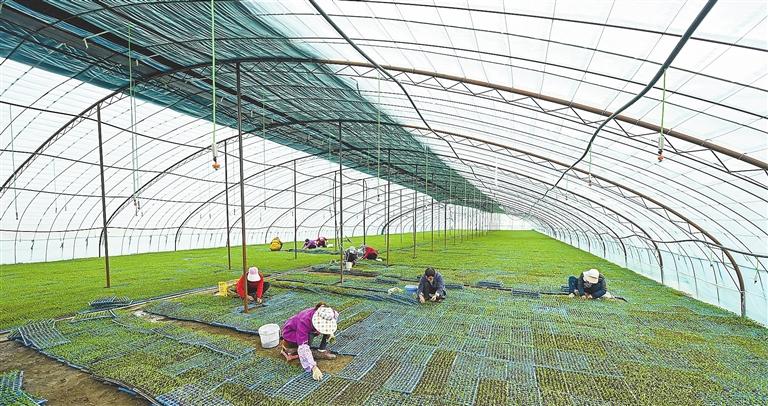
TOWED by a driverless tractor, a hill-drop planter moves forward and sows corn seeds at a fixed spacing. Meanwhile, a seed roller covers the seeds with soil and flattens the drip irrigation belt. As it gets warmer, Luo Junjie, a 31-year-old farmer in Qapqal Xibe Autonomous County of Ili Kazak Autonomous Prefecture, a major grain-producing area in Northwest China’s Xinjiang Uygur Autonomous Region, is leading his team of 15 busy farmers. The team mainly plants corn and wheat and has 13 pieces of agricultural machinery, helping them in a wide variety of tasks from plowing to sowing. Working on land covering 533 hectares, the team employs the help of agricultural machines in every step of planting corn and wheat. Corresponding with the BeiDou Navigation Satellite System, the team’s tractors and drones can operate automatically on pre-planned routes. “Our team’s per hectare yield of corn reached some 19 tons last year. The figure has almost doubled compared to 2018 when I started renting the land,” Luo said. Luo is a college graduate majoring in interior design. Although his family suggested he seek opportunities in cities, he decided to return to his hometown. “There was spare land in my hometown. So I asked myself, why not make good use of it?” Luo said, adding that he was inspired in 2017 by favorable national policies to support agriculture. The educated young man also understands the importance of modern agricultural machines. His business quickly expanded. Last year, the team’s per capita income reached 333,000 yuan (about US$48,344). Encouraged by the success of Luo’s team, more farmers realized the importance of modern means and management of agricultural production, said Yang Minshan, deputy head of the agriculture and rural affairs bureau in Qapqal Xibe Autonomous County. “Farmers set up cooperatives to share costs and agricultural equipment, and apply drip irrigation technology on the farmland. These methods bring convenience, reduce costs, and increase output,” Yang added. According to the regional department of agriculture and rural affairs, some 47.4% of Xinjiang’s arable land has been developed into high-quality farmland, with the aim to gradually transform all of its farmland into high-quality farmland. At the Xinliang Vegetable Professional Cooperative in Qapqal Xibe Autonomous County, seeds, pesticides, and fertilizers are piled up in storehouses. Ma Chenglai, head of the cooperative, said that about 70% of agricultural resources are supplied by the All China Federation of Supply and Marketing Cooperatives, which are then sold to the cooperative’s 54 members at purchasing cost. The cooperative also helps members sell their vegetables grown in over 130 hectares of greenhouses. Local products are sold across the country via e-commerce platforms like Taobao. “Our cooperative sorts, stores, transports, and sells vegetables in standardized procedures. Now we sell products as far as Guangdong Province,” Ma said.(Xinhua) | 
